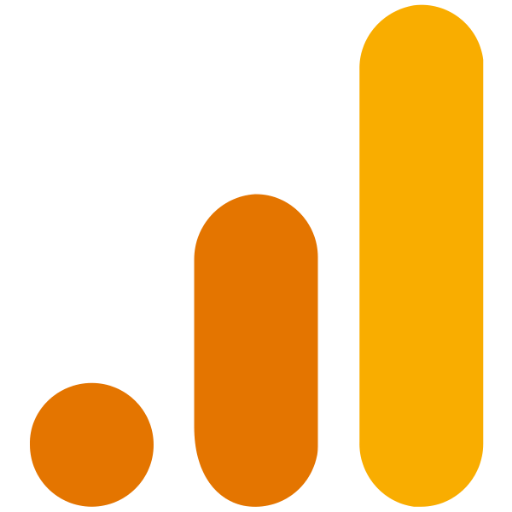Goggle Analytics-website traffic and performance analysis.
AI-powered insights for smarter website tracking.
How do I set up Google Analytics?
Can you explain bounce rates in Google Analytics?
What are the best practices for setting goals in Google Analytics?
How can I use Google Analytics to improve my website?
Related Tools
Load More
Google Analytics Virtual Assistant
Talk to your Google Analytics data for reporting, optimization, hypothesis testing etc. Powered by Adzviser.

Analytics Expert
Expert in Google Analytics 4, GTM, BigQuery, and Looker Studio

⚡ [GA4 - GTM - Looker - BigQuery] Expert 🥇
Expert in GA4, GTM, Data Studio, and BigQuery, specializing in data analysis and reporting.

Tech SEO Guru
A technical SEO GPT model based on specific documents, providing specialized advice and insights.

GA4 Guide by GA4.com
We help you navigate Google Analytics 4 and start using it more.

Search Analytics for GPT
Retrieve data directly from Google Search Console and perform URL inspections on your GSC properties.
20.0 / 5 (200 votes)
Introduction to Google Analytics
Google Analytics is a robust web analytics service designed to track and report website traffic, user behavior, and other key performance indicators (KPIs). Its purpose is to provide businesses and individuals with detailed insights into how visitors interact with their websites or apps, allowing them to make data-driven decisions to optimize user experience, increase engagement, and improve conversion rates. Google Analytics collects data through a small snippet of code embedded in web pages, which tracks various metrics such as page views, session durations, bounce rates, and user demographics. For example, an e-commerce store can use Google Analytics to determine which products attract the most interest, analyze customer behavior during the purchase process, and identify bottlenecks that cause potential customers to abandon their carts.

Key Functions of Google Analytics
Tracking Website Traffic
Example
Google Analytics captures data on the number of users visiting a website, their geographic location, the devices they use, and their on-site behavior.
Scenario
A travel blog uses this function to track how many visitors from different countries are viewing their content. By analyzing this, they discover a growing audience from Australia, prompting them to create more region-specific content or target Australian advertisers.
Goal Tracking and Conversions
Example
Goals in Google Analytics can track actions such as form submissions, purchases, or time spent on a page. This helps businesses measure how well their site is achieving its objectives.
Scenario
An online course provider sets a goal to track how many users complete a registration form for a webinar. By analyzing this data, they find that most users drop off halfway through the form, suggesting the form may be too long or complex. They simplify the form, leading to a 20% increase in registrations.
Custom Reports and Dashboards
Example
Google Analytics allows users to create custom dashboards tailored to specific metrics or KPIs that matter to their business, combining data from different areas.
Scenario
A digital marketing agency creates a custom report that combines traffic data, source attribution, and conversion rates for a client’s ad campaign. This allows the agency to quickly identify which traffic sources are delivering the best return on investment (ROI) and optimize their client’s ad spend accordingly.
Who Benefits from Google Analytics?
Small and Medium Businesses (SMBs)
SMBs can greatly benefit from Google Analytics by gaining insights into how users are interacting with their website. This can help them optimize their marketing strategies, refine user experience, and ultimately improve conversions. For instance, a local bakery with an online store can use analytics to track which products are generating the most sales and which marketing channels drive the highest traffic, allowing them to focus resources where they matter most.
Digital Marketing Professionals
Marketers use Google Analytics to assess campaign performance, identify high-converting traffic sources, and optimize content for better engagement. A social media marketer, for example, can track the performance of Facebook ads by seeing how much traffic is coming from social media, what users are doing once they land on the website, and how many conversions result from specific campaigns. This data helps marketers fine-tune their strategies and boost ROI.

How to Use Goggle Analytics
Step 1
Visit aichatonline.org for a free trial without login, also no need for ChatGPT Plus.
Step 2
Sign up for a Google Analytics account if you haven’t already. You’ll need a Google account to begin.
Step 3
Set up your property by adding your website or app. This includes inputting your site’s name, URL, and other key details.
Step 4
Install the tracking code provided by Google Analytics on your website. You may need to use Google Tag Manager for easier implementation.
Step 5
Use the Google Analytics dashboard to monitor metrics such as user behavior, traffic sources, conversions, and bounce rates. Customize reports to fit your goals.
Try other advanced and practical GPTs
Google Analytics Virtual Assistant
AI-Powered Google Analytics Insights

Google Ads Copy Wizard
AI-Powered Google Ads Copy Generator

Mikan
AI-powered English assistant for everyone.

Code help for Backpack for Laravel
AI-driven assistance for Laravel Backpack integration

Spirit Seeker
AI-powered spiritual guidance for all.

网络爽文小说家
Unleash your storytelling potential with AI

Professional Photography Advisor
AI-powered tool for photography guidance and inspiration.

LMGTFY | A better way to research the internet
AI-Powered Research at Your Fingertips

JRA競馬予想
AI-powered horse race predictions

Dynamic Programming Tutor
Interactive AI for mastering dynamic programming.

Stock Image and Video Keyword Assistant
Enhance stock visibility with AI-powered metadata.

Flutter Helper
AI-powered solutions for Flutter development

- Event Tracking
- User Behavior
- Conversion Tracking
- Traffic Analysis
- Campaign Monitoring
Frequently Asked Questions About Goggle Analytics
What is the main purpose of Goggle Analytics?
Goggle Analytics helps you track and analyze website traffic, user behavior, and conversion rates, allowing you to make data-driven decisions for improving your site’s performance.
Can I track mobile app usage with Goggle Analytics?
Yes, Goggle Analytics supports tracking for both websites and mobile apps. You can set up separate properties to monitor app-specific user engagement and performance metrics.
How can I set up goals in Goggle Analytics?
In the Admin section, navigate to 'Goals' under the desired property. You can create goals to track specific user actions like form submissions, purchases, or page views. Use templates or set up custom goals for more advanced tracking.
What are the key metrics I should monitor in Goggle Analytics?
The key metrics include user sessions, bounce rate, traffic sources, conversion rates, and average session duration. These metrics help you assess how visitors engage with your site.
Does Goggle Analytics offer real-time data tracking?
Yes, Goggle Analytics provides real-time data tracking, allowing you to monitor active users, their actions, and where they’re coming from in real-time.